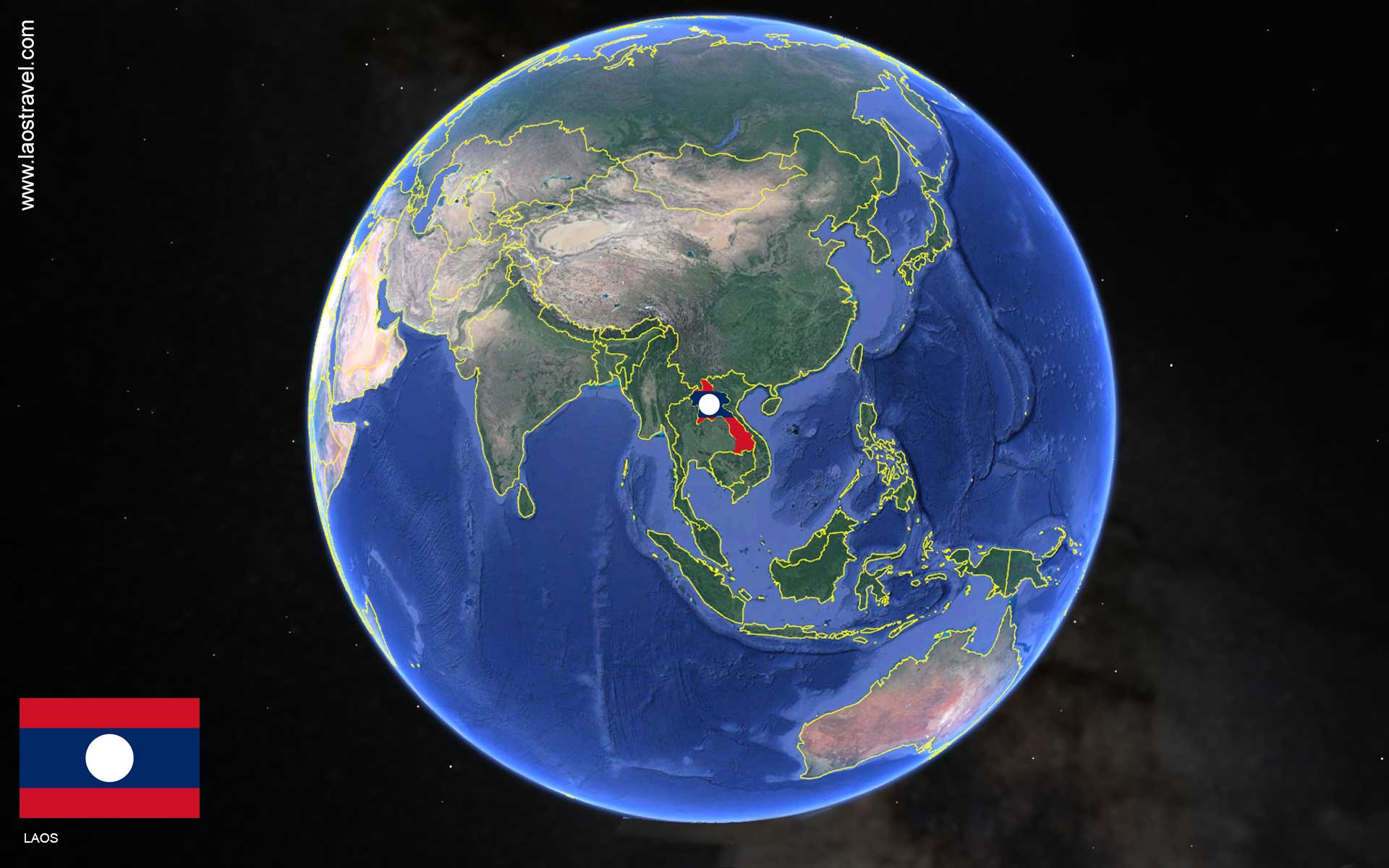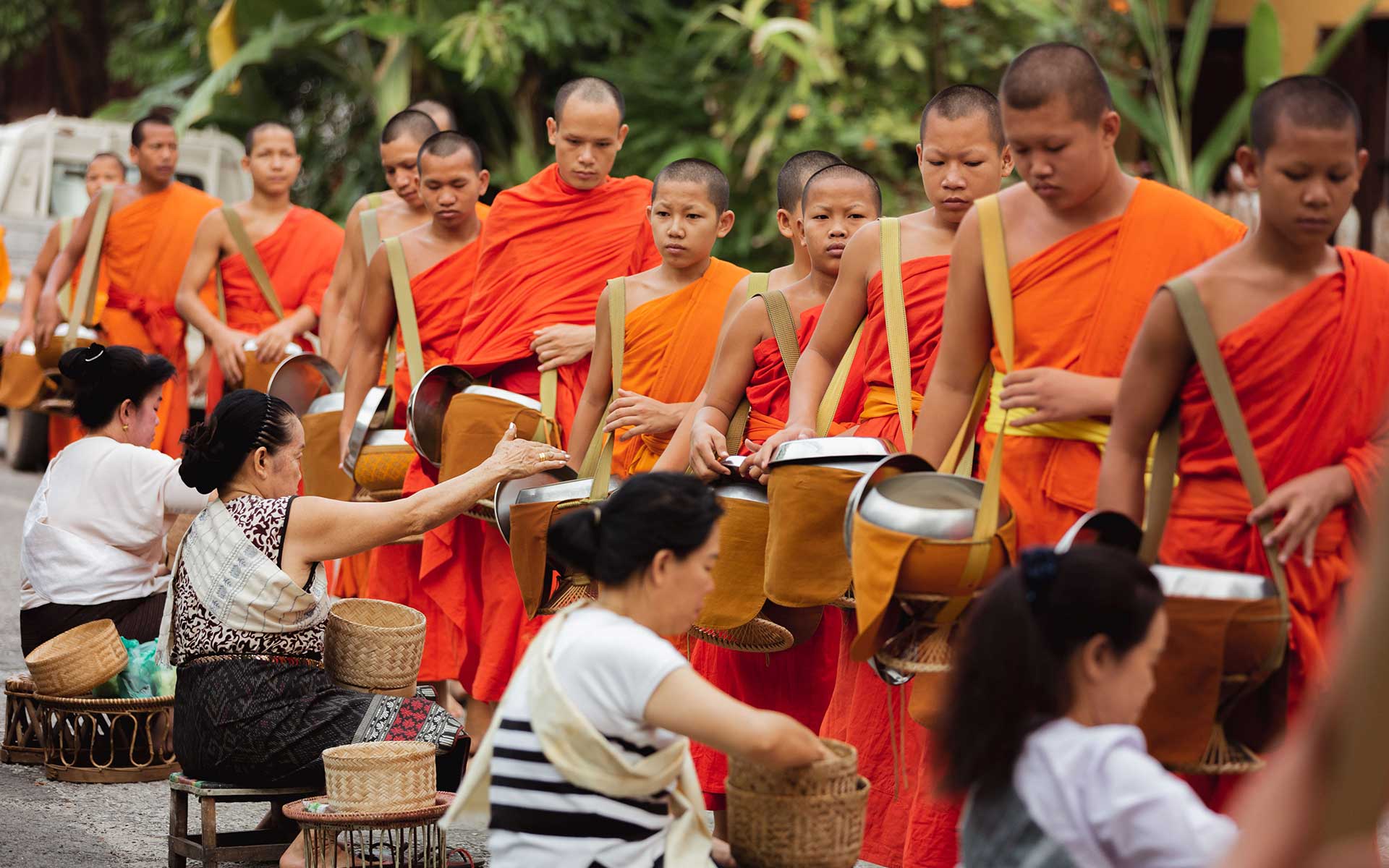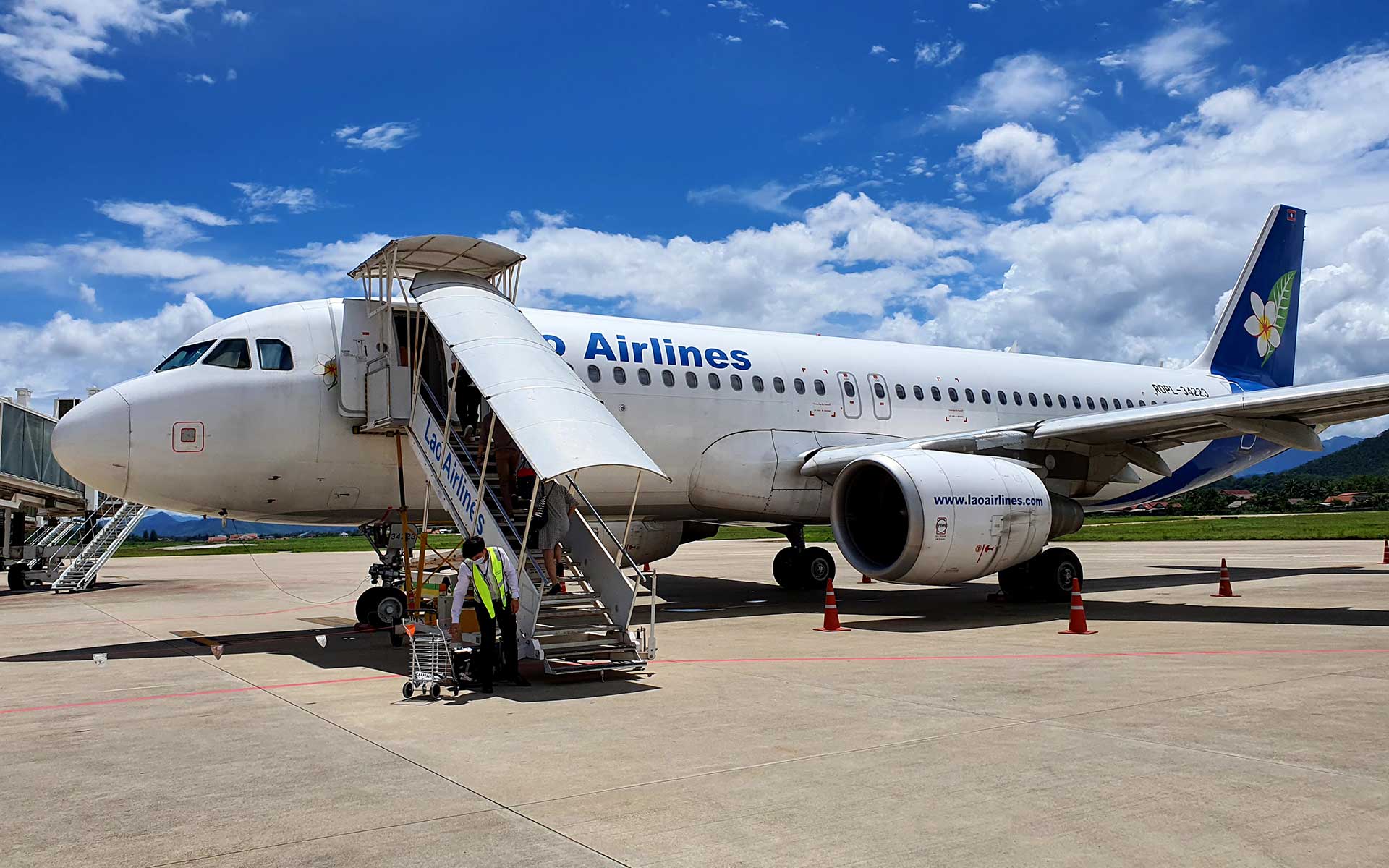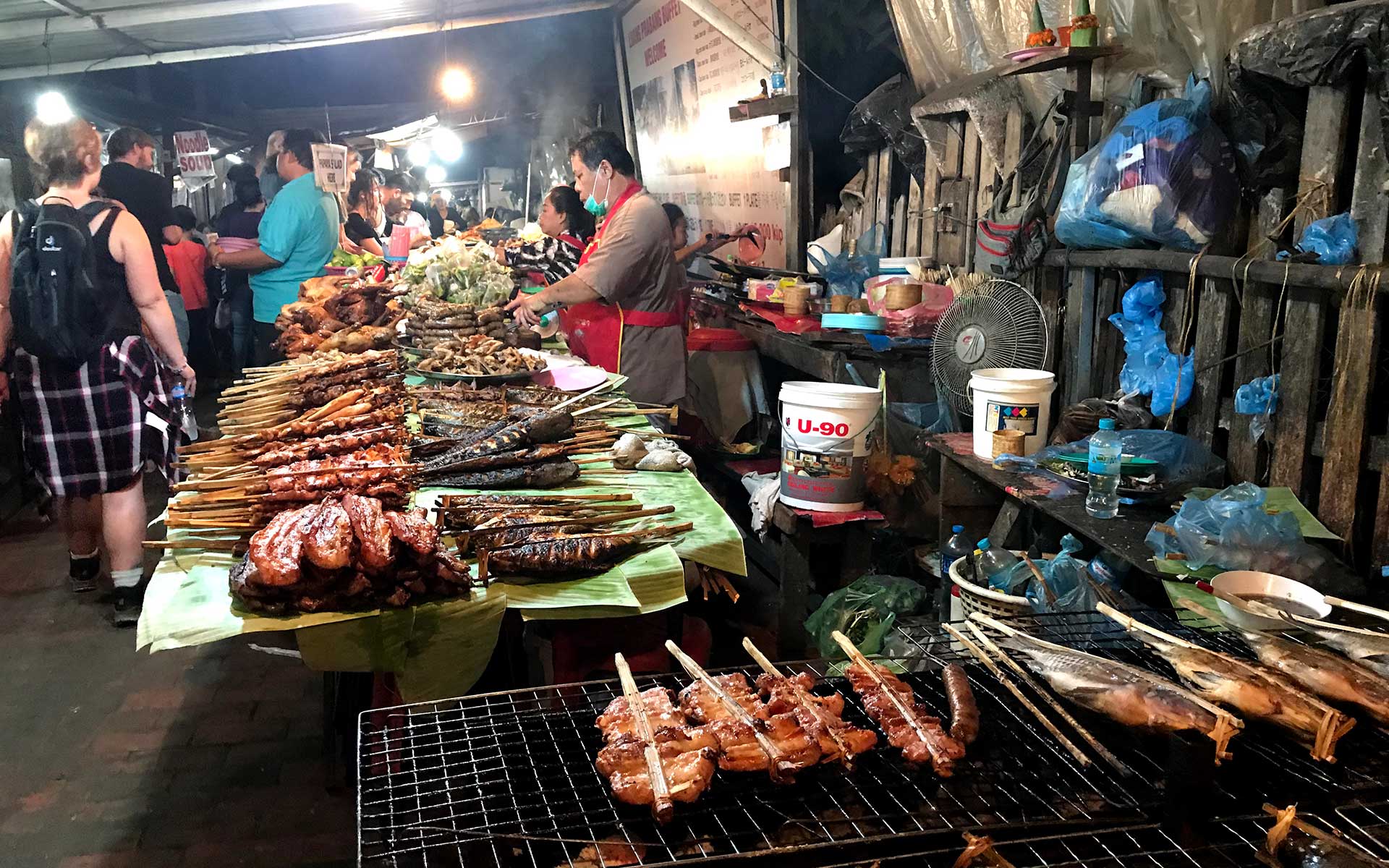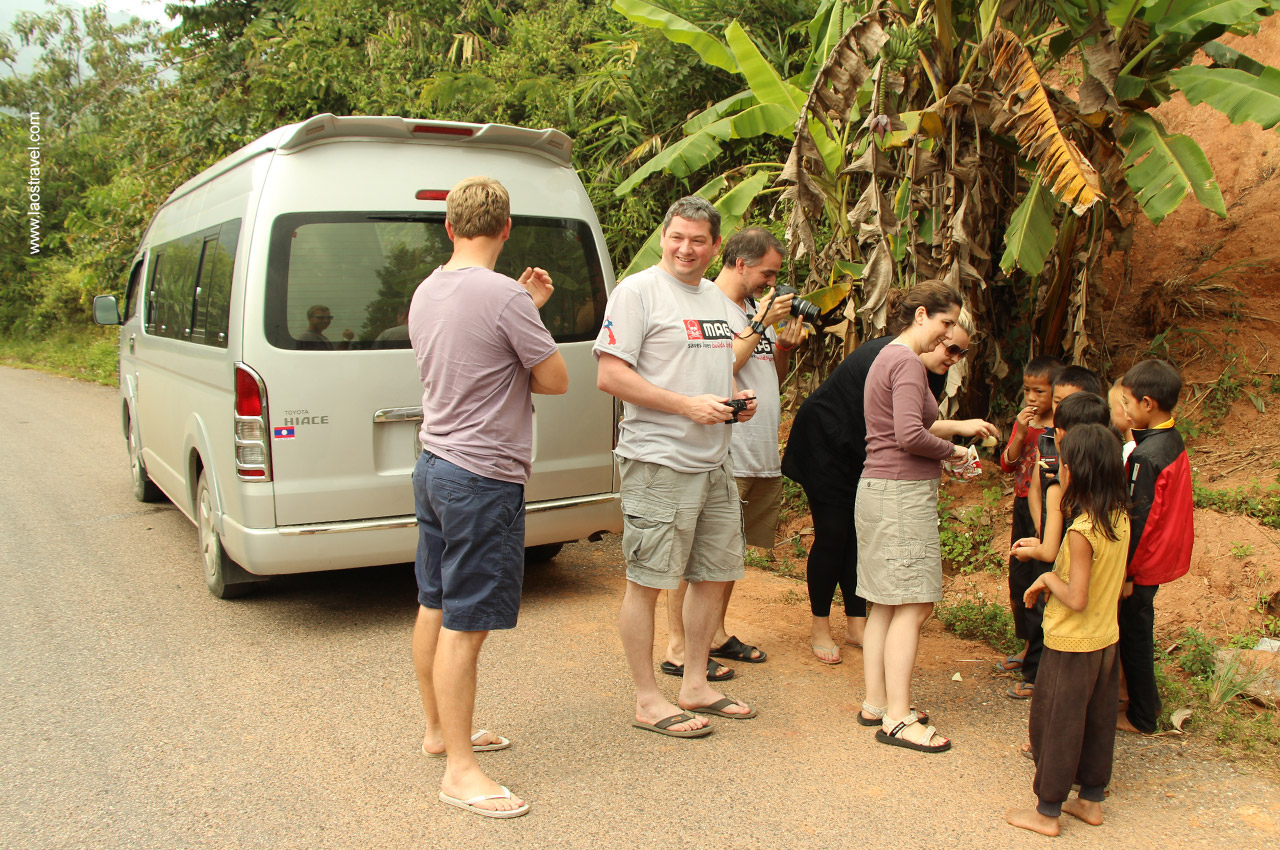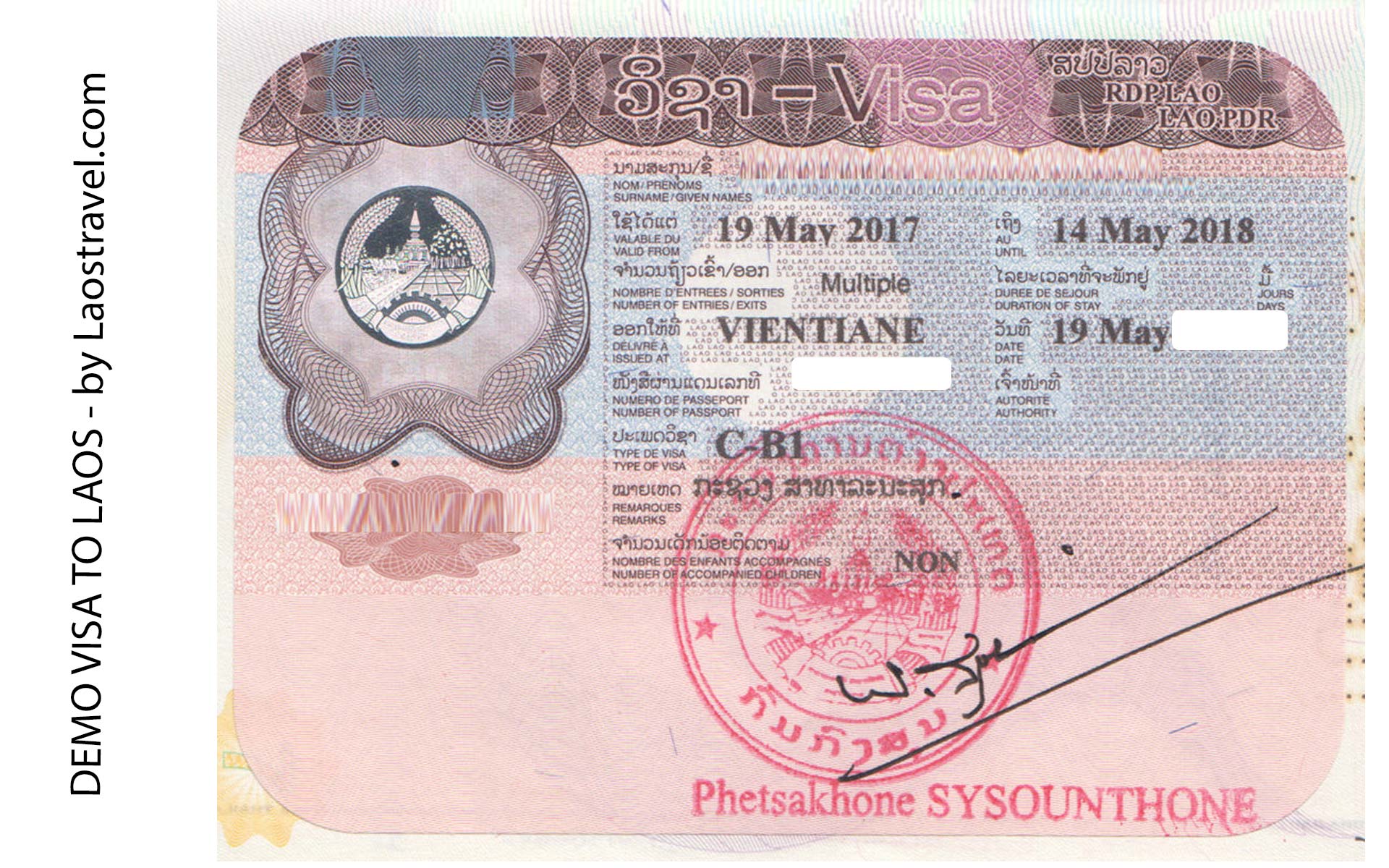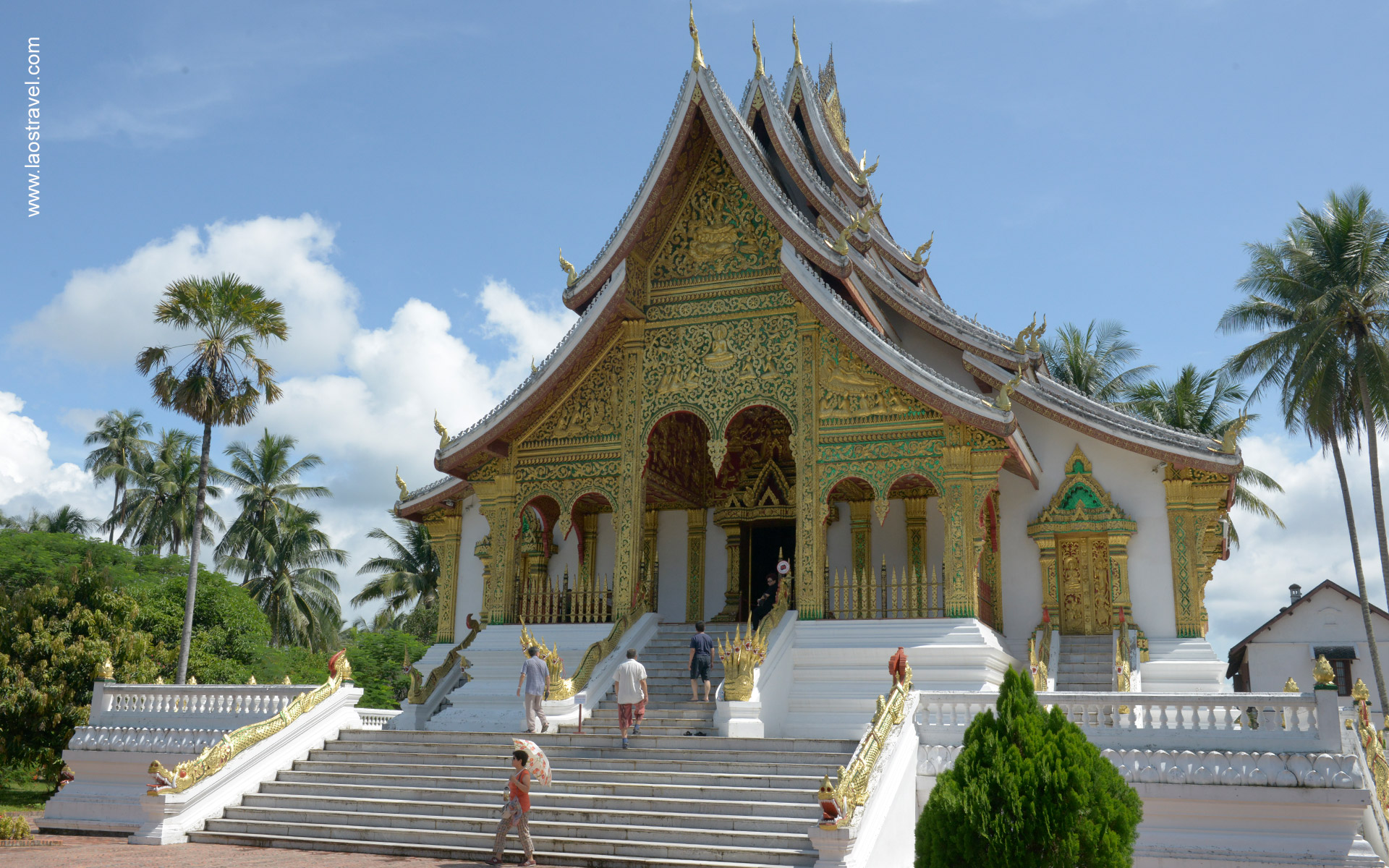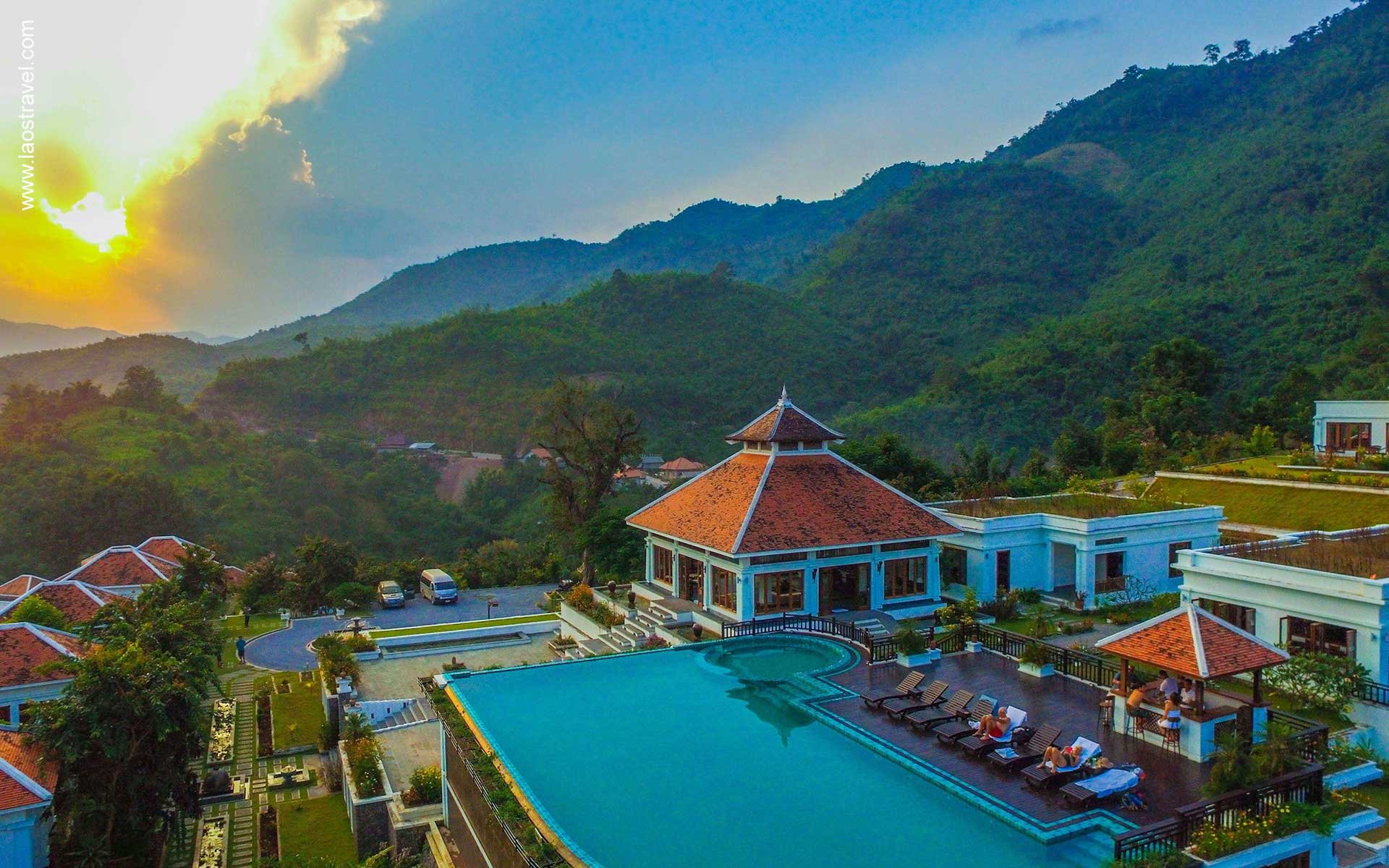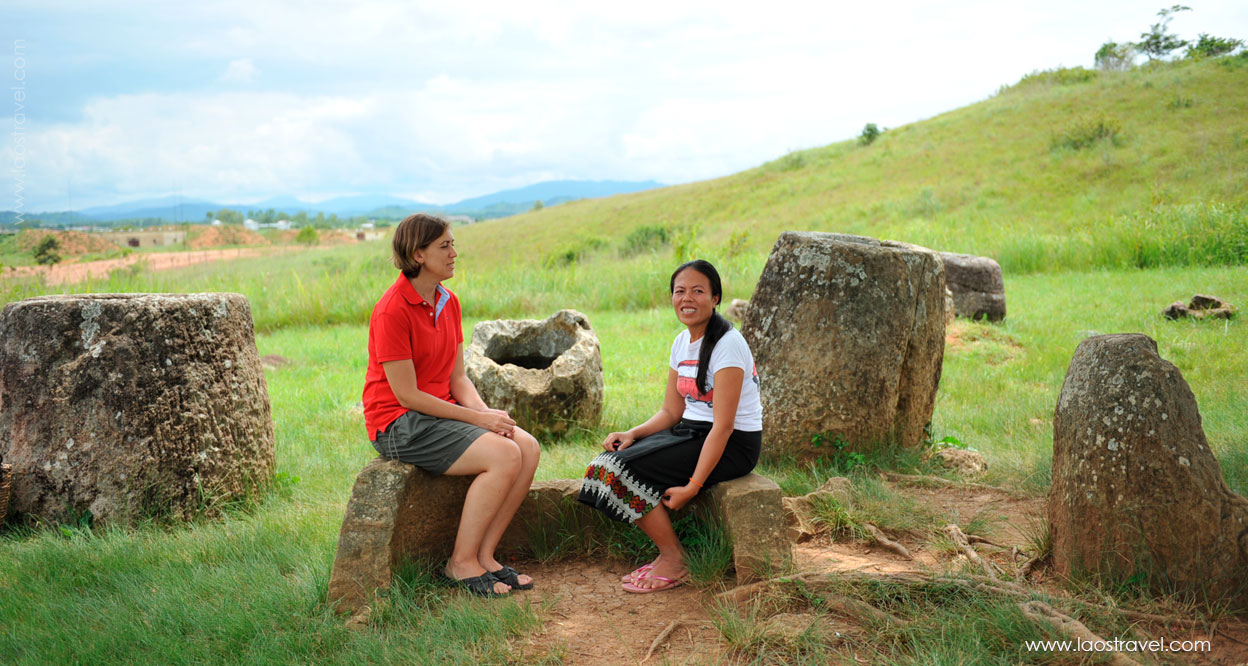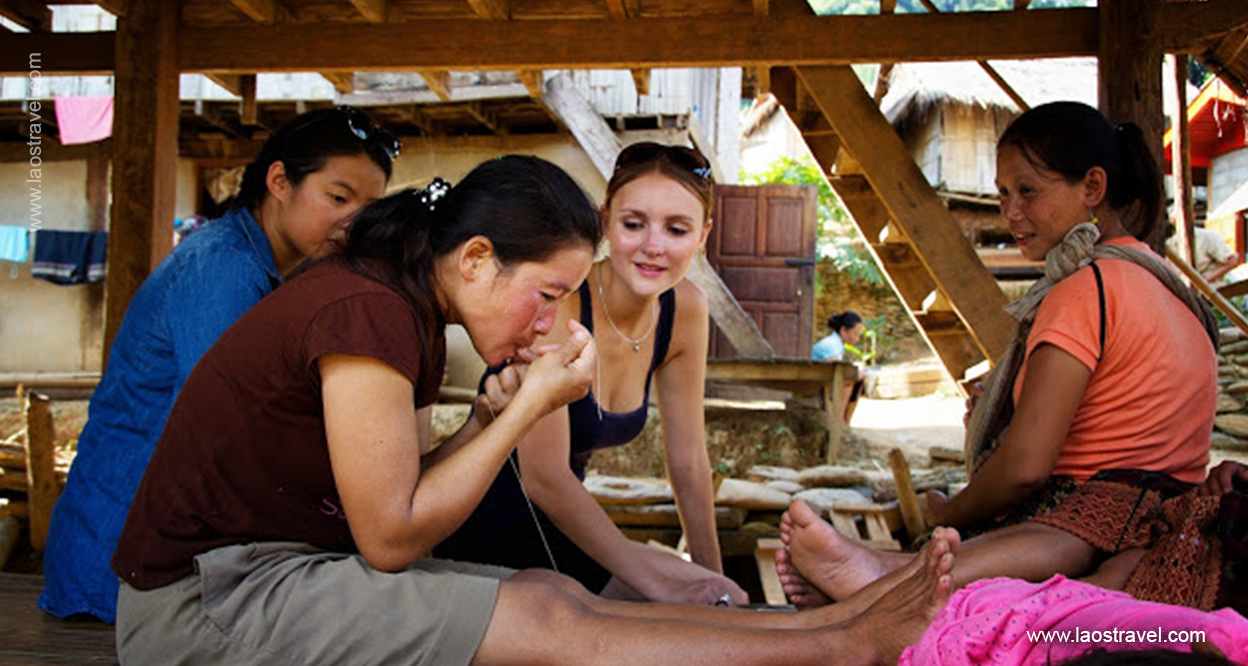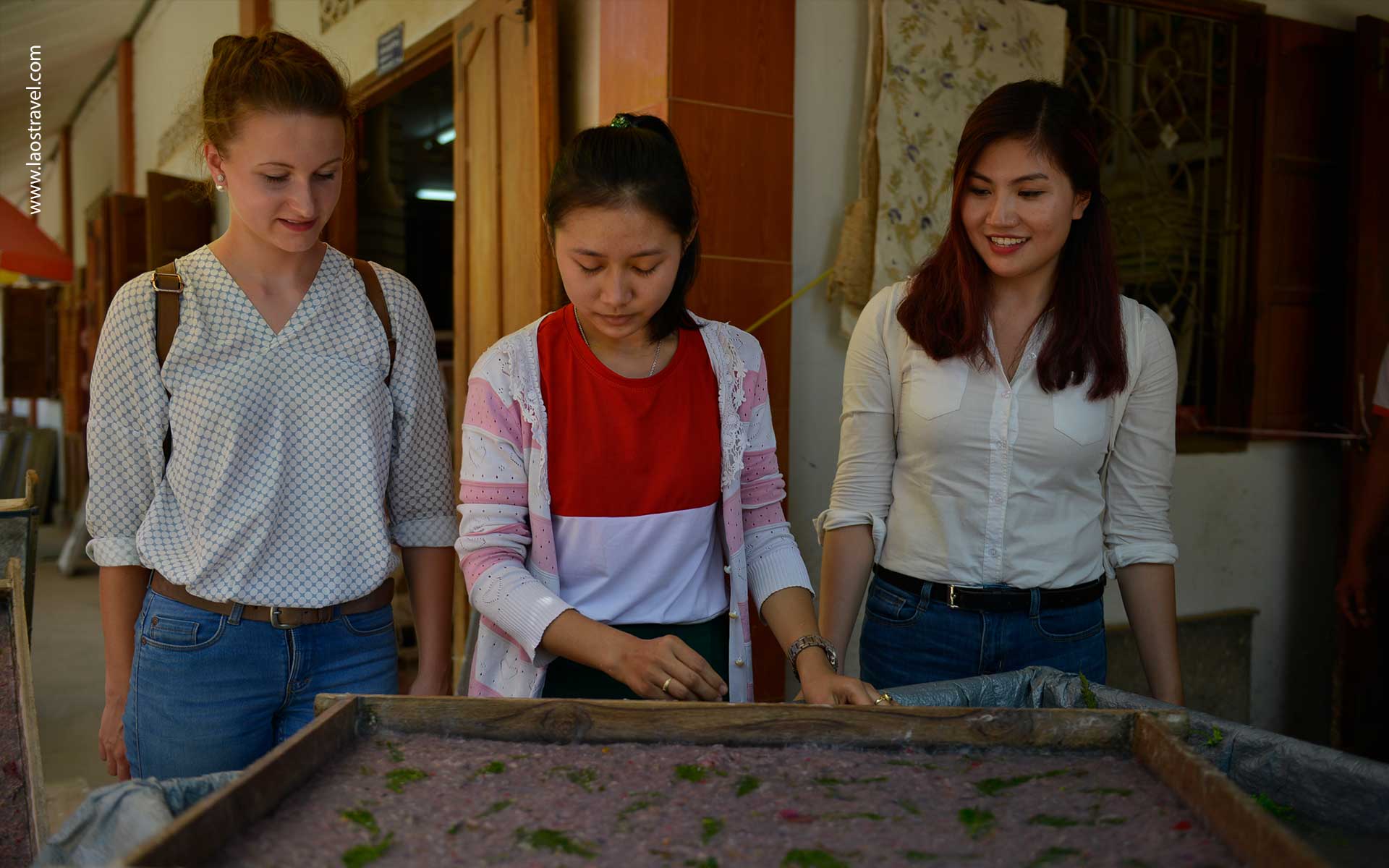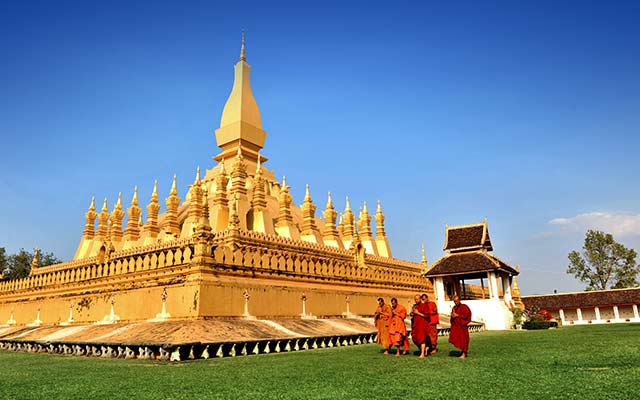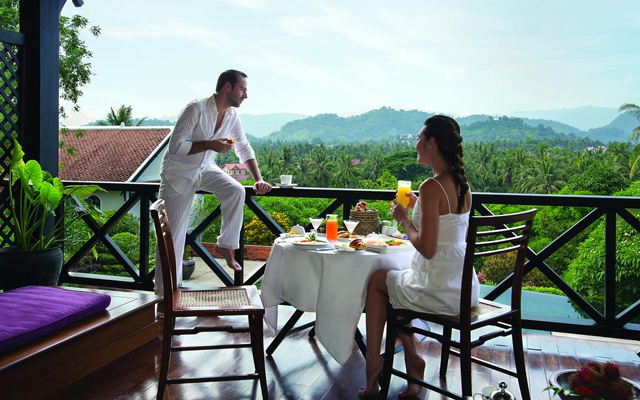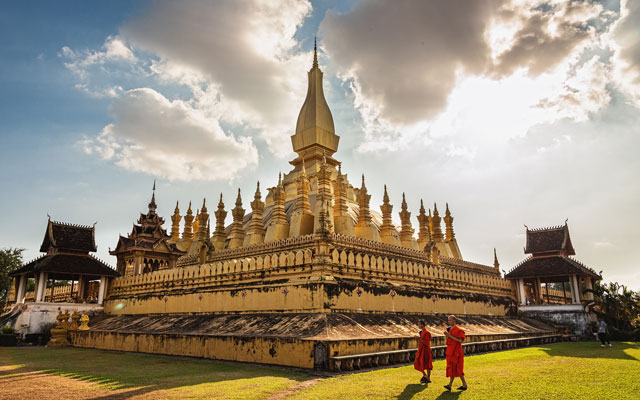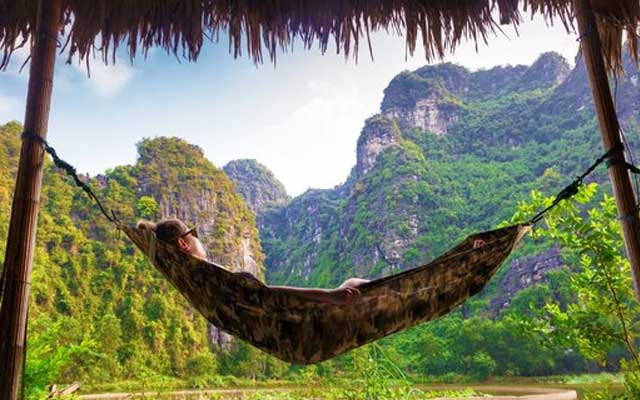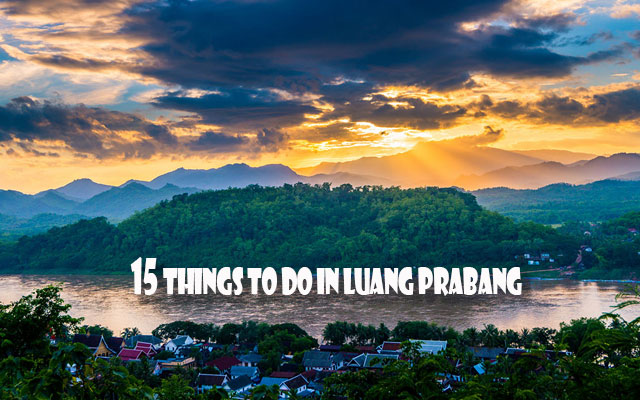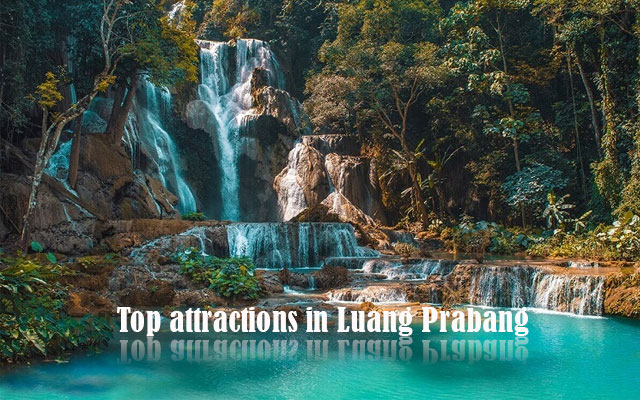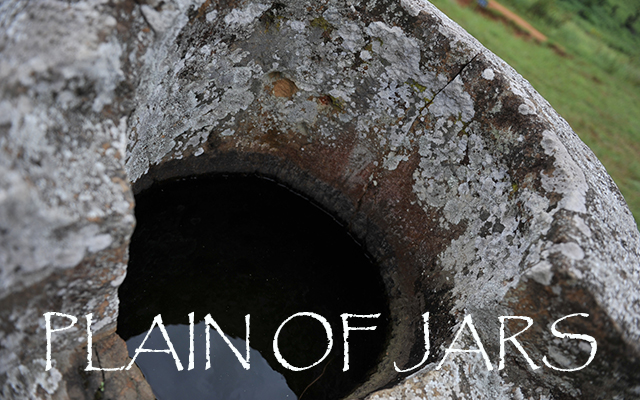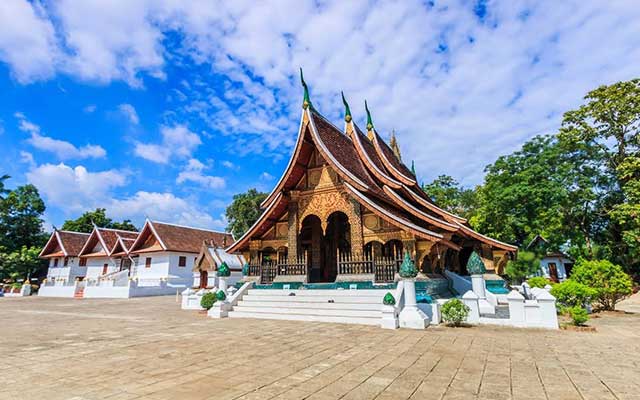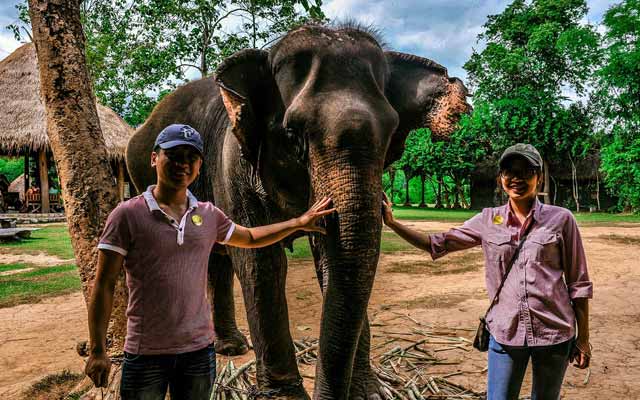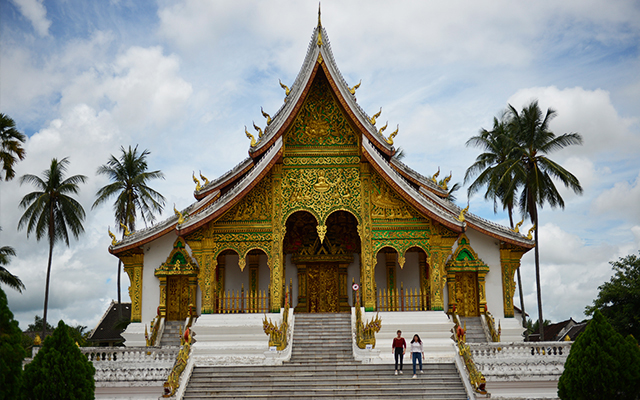Laos – All things about Laos Country
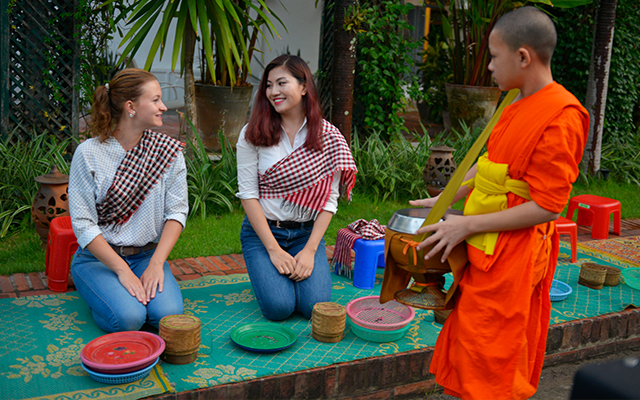
About Laos Country: 15 Things You Need to Know Before Visiting
Laos is one of the least explored countries in Southeast Asia, but it offers plenty of beautiful places to visit. With stunning waterfalls and nature-blessed beauty from North to South, travelers can explore natural landscapes, diverse cultures, and fantastic local life. Here you will find a list of things you need to know about this mystical country.
Contents
I. Location
Laos is located in South East Asia. It shares borders with Thailand, Myanmar, China, Vietnam, and Cambodia. It is the only landlocked country in the area, with the Mekong River as the primary body of water.
II. Time zone
Time zone in Laos is GMT + 7 (UTC+07:00). It is 7 hours ahead of London, 15 hours ahead of Vancouver, 12 hours ahead of New York, 3 hours behind Sydney, and 5 hours behind Auckland.
III. The best time to visit Laos
Due to the shape of the country which stretches from China to Cambodia, the weather conditions vary from the North to the South. Due to higher elevation, the north of Laos is generally cooler and less humid than the South.
Like most of Southeast Asia, Laos has a tropical climate with two distinct seasons: wet and dry. The rainy season runs roughly from May to September and the dry season from October to April. The coolest and driest months are from November to February when the temperature is under 30 degrees Celcius. This period is considered to be the best time to visit Laos. During this period, hotel price goes up and occupancy is always high.
Temperatures reach their peak in April and May when they rise to 35-40 degrees Celcius in the daytime. After that, rainfall tends to come in short and heavy bursts, which turns to a more constant downpour in the later months.
IV. Get in & Get out
As Laos is a landlocked country, besides flights, it is easy to reach it on land through neighboring countries.
Crossing Overland
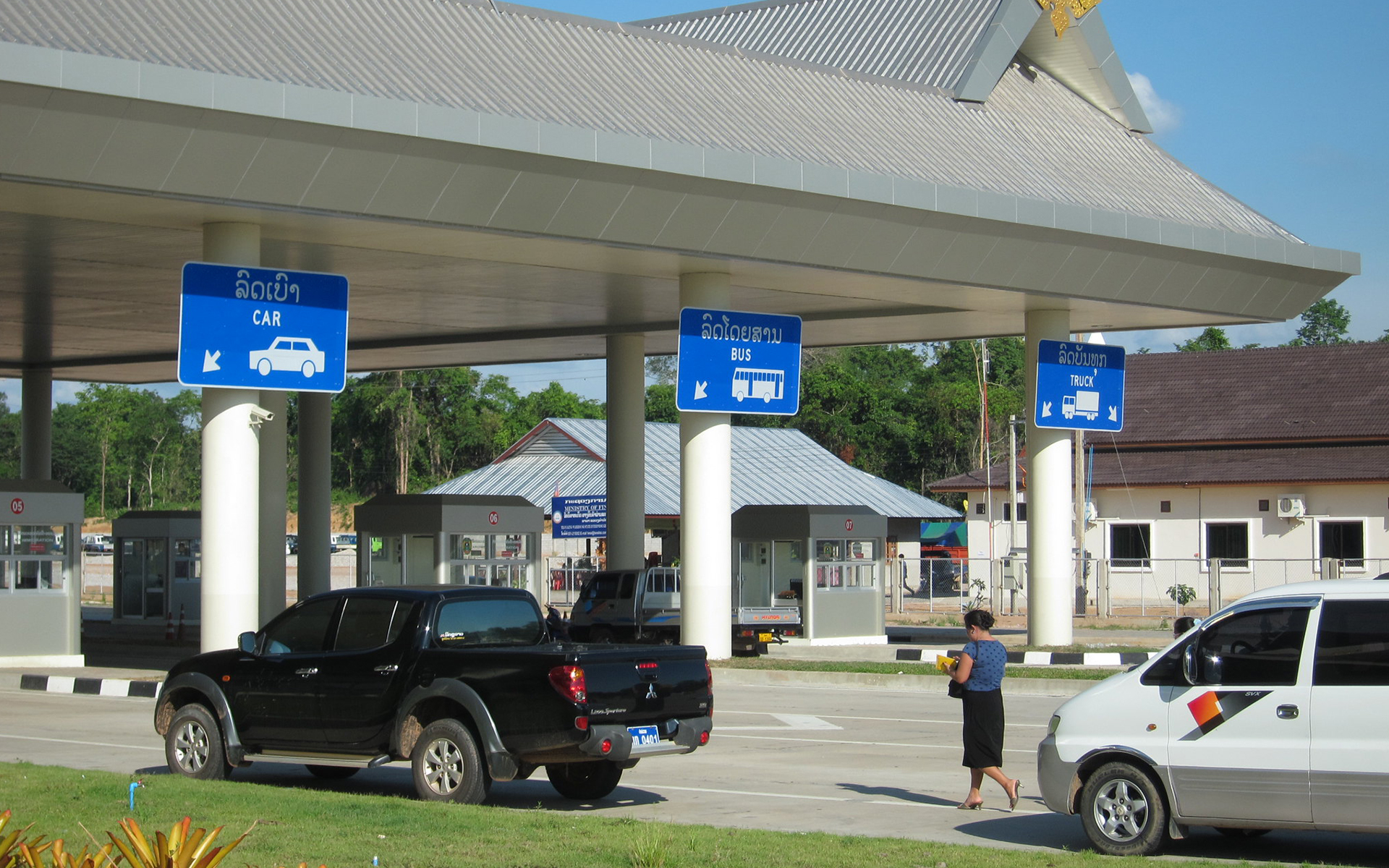
Travelers can get into Laos through land border crossing points
Except for Myanmar, travelers can enter and exit Laos through many border points with Thailand, Vietnam, Cambodia, and China. If you plan to visit North Laos first, you can cross borders with China, Vietnam, and Thailand. The most popular border point is through Chiang Khong in Thailand to reach Huay Xay, Laos where you take a slow boat to Luang Prabang.
In case you want to enter or depart from the South of Laos, there is a border crossing with Cambodia at Nong Nok Khiene. It is 6km only far from 4000 islands in Champasak.
Flights to Laos
Laos has four international airports as Luang Prabang, Vientiane, Savannakhet, and Pakse. Travelers mainly fly into either Vientiane or directly into Luang Prabang. Both airports have international flights as well as connections throughout Southeast Asia. Travelers who come from Euro or US need to transit in Thailand or Vietnam to connect with flights to one of these airports. Choosing which airport to use depends on your itinerary while in Laos.
The flights to Pakse and Savannakhet are limited as only Laos Airlines operates flights through these airports.
V. Language
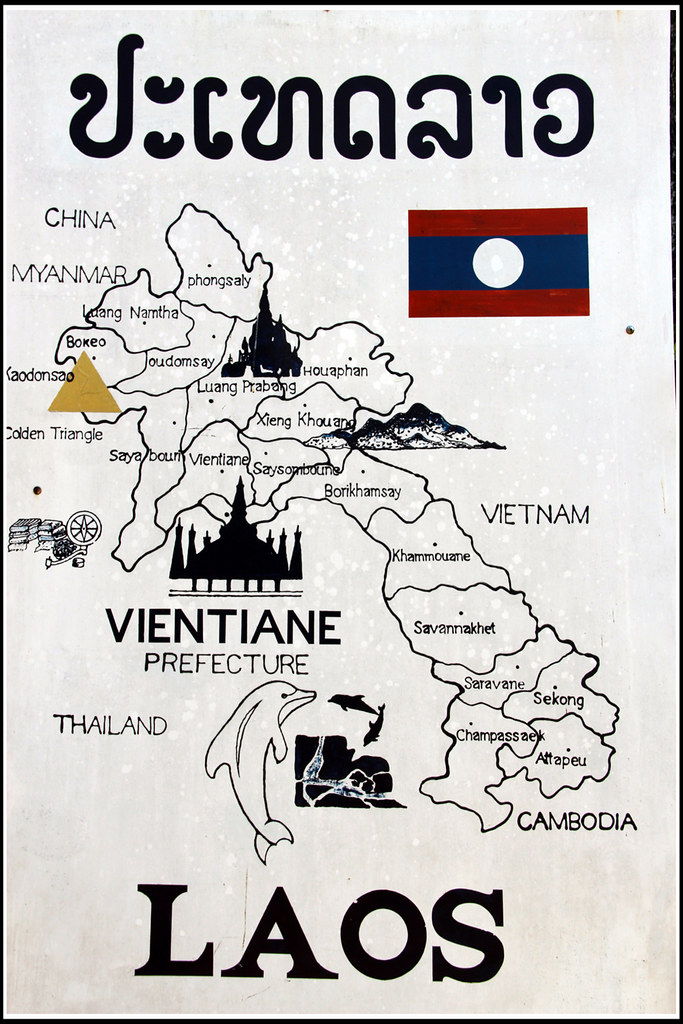
A map of Laos
The official language of Laos is Lao, a Southeast Asian language closely related to Thai. Laos was once a French colony, but French is no longer widely spoken. English is used in main tourist destinations and bigger cities. However, do not expect everyone to speak and understand English, especially in the countryside. Therefore, you will have to rely on non-verbal communication, something the Laotians are very good at.
In the North where many Chinese immigrants and ethnic minorities live, Mandarin and minority languages are spoken as well. Learn more about Laos languages here
VI. Currency, Credit Cards & Exchange money
The local currency in Laos is Lao Kip. The Kip is available in 50,000K, 20,000K, 10,000K, 5000K, 2000K, 1000K, and 500K notes; there are no coins in circulation. The Lao Kip is a weak currency with an exchange rate of around 8.800 LAK to 1 USD. Be aware that banknotes are very similar to each other and will cause mistakes if you don’t pay attention to them.
USD and Thai baht are also widely accepted. Although Laos law forbids the use of foreign currencies to pay for goods and services, many big hotels, restaurants, and shops still accept Thai baht or US dollars in place of kip, usually at a fairly decent exchange rate.
ATMs are available in Laos but only in main cities like Vientiane, Vang Vieng, Luang Prabang, Xieng Khuang, and Pakse. As in Thailand and Cambodia, every time you withdraw money with a foreign card, you get an ATM charge of up to 20 000 kips (2.5 USD).
Major credit cards (Visa and Mastercard) are accepted at upmarket hotels and restaurants in Vientiane and Luang Prabang and in a limited number of other tourist centers. You will be charged up to 5% to pay directly with it.
Money exchange can be done at banks or money exchange shops. Most towns have a bank with basic exchange facilities – usually dollars and baht. Travelers’ cheques are now accepted at many banks and a wide variety of international currencies can often be changed, including euros and sterling. The changing fee is around $1 per cheque. Money changers are common in larger towns, and rates are generally a little lower than the banks.
In general, cash is still a king in Laos. If you arrive in Laos from overland or going to remote areas, make sure you have some Cash (Thai Bath, US$, EUR) along to exchange to local currency. It’s not possible to convert money to or from kip outside of Laos. Be sure to exchange all your kip before leaving the country.
VII. What to eat in Laos?
Lao cuisine is heavily influenced by Thai food but has fewer options of street foods. Popular dishes that you can find everywhere are simple noodle soups, curries and rice. Instead of regular steamed rice, Lao people eat sticky rice. This is glutinous rice that’s rolled into balls, then serve with meat and vegetables. Laotians like their food spicy, but they separate chili on the side for everyone to add. Be sure to try the larb, the national dish of Laos. It can be described as a type of spicy, cold meat and papaya salad.
French influence is also visible. It means you can find bread, pastries, cookies… everywhere. There are fantastic fusion French restaurants in Vientiane and Luang Prabang. All food in Laos gets washed down with Beer Lao, the national rice beer or Lao Lao, rice whiskey.
VIII. Get around the country
The train is not available in Laos. Over the years, there have been plans and aborted attempts to build a railroad system in Laos but for now, you cannot get around by train. As a tourist, you have several options for getting around in Laos as flights, boats & buses.
Flights
Flights within Laos are scarce. The aviation in Laos nearly has no competition when Laos Airlines operates most of the domestic routes. There is another airline called Lao Skyway but its schedule is very limited and the flights are not reliable. As the result, airfare in Laos is quite high if compared to neighboring countries as Thailand or Vietnam.
Vientiane is the biggest city where you can look for flights to remote areas such as Luang Namtha, Oudomxay. From Luang Prabang or Pakse, it is possible to fly to the main attractions only.
Boats
The river systems in Laos are often the next best way of getting around locally in Laos. Tourists prefer traveling by boat between Huay Xai border and Luang Prabang. It is relaxing, much smoother than the bus, and you get to see the amazing views of northern Laos and the Mekong.
In the South of Laos, you can travel by boat from Pakse to visit highlights as Wat Phou temple or 4000 islands.
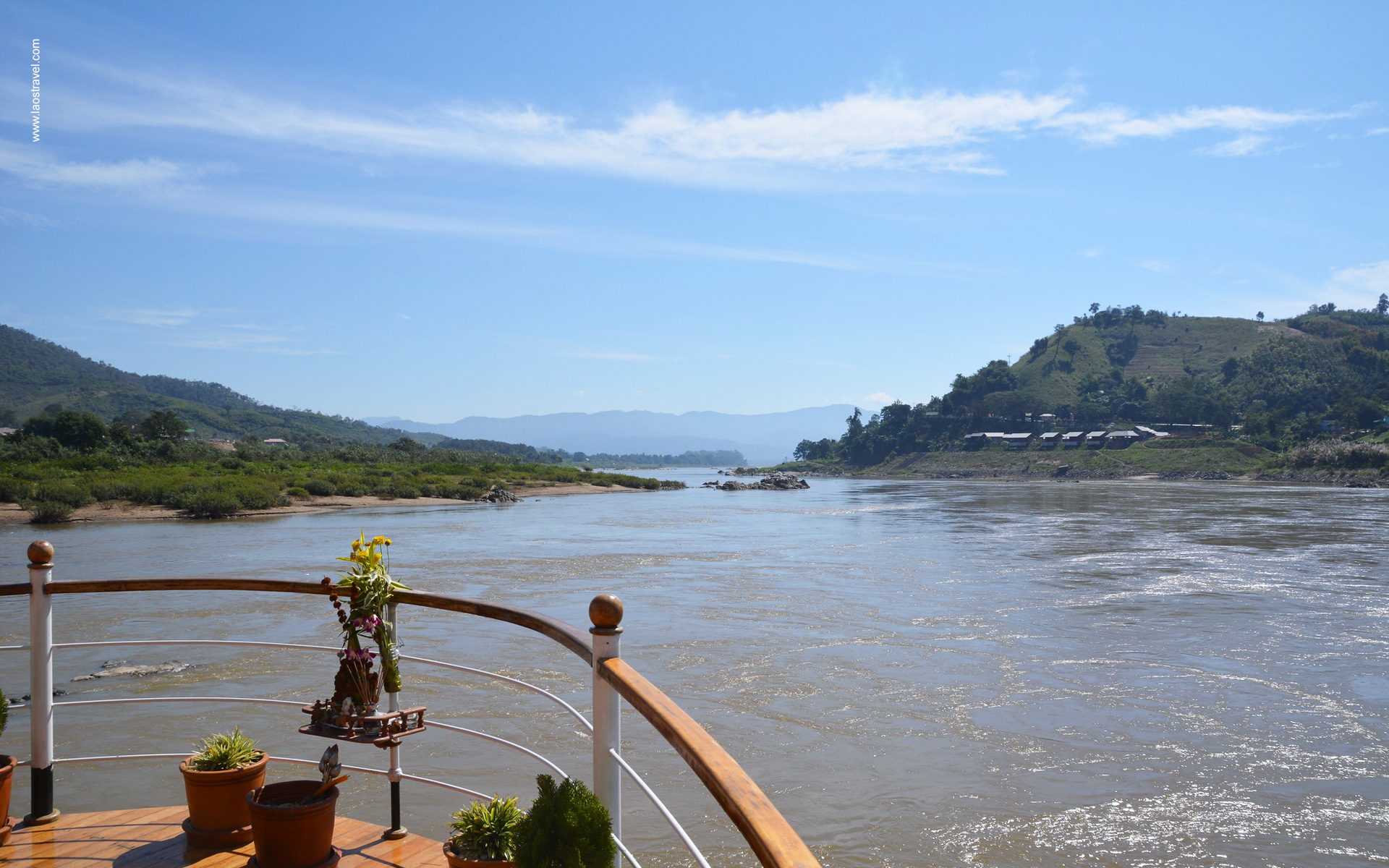
Boat trip on Mekong river with stunning view of surrounding mountains
Bus & Minivan
Buses and minivans are the most popular means of transportation for both tourists and locals as few people own a car. Big touring buses drive between bigger cities and tourist destinations. Tourist buses are quite comfortable with standard flatbeds. Although buses are more comfortable, minivans are faster and sometimes the only option.
Traveling overland in Laos is very slow. A simple 200 km bus ride can take all day. Road condition is not good. Normally, drivers cannot drive faster than 60 km/h. In some routes in the north, they may drive at only 15 or 20 km/h. Another thing that makes the trip take so long is that the bus driver stops anywhere to let people on and off.
However, it is more affordable and exciting to travel overland. If you are not in a rush, taking the local bus or minivan is a fun cultural experience. In Laos, people can seat on small plastic chair which are places in the corridor if all seats are full. I believe it will be something new for you. Besides, you can see that buses transport everything, from motorbikes in the top of the bus to live animals in the luggage compartment.
Once at your destination, you have a choice of walking, tuk-tuk or motorbike. Motorbikes are a fun mode of transportation to explore your surroundings with, but it is recommended only when you have experience with unpaved roads in Southeast Asia. Another option is to take a tuk-tuk for short rides or even hire a driver for the day to drive you around as a guide.
IX. Internet

Data package price in Laos
The internet in Laos is quite widespread throughout the country via several options. Many hotels offer decent Wifi connections. However, some remote areas don’t have hotels with free Wifi or some hotels require you to head down to the lobby to access it. It is not a problem as you can use 3G/4G SIM card instead. Unitel and Lao Telecom are the two largest telecom providers in Laos. They both have 4G coverage countrywide, so they are better than other providers. It is easy to buy their SIM card when you arrive.
X. Electricity Socket
In Laos Electricity is 230V, with a frequency of 50hz. Power outlets are two-prong round or flat sockets. A power adapter should not be needed if you come from North America or Europe. To avoid to buy new adapters for everywhere you go, you can use Travel Adapter.
XI. Visa
Visa to Laos is quite simple. Whether you enter the country by air or through border crossing, you can get 30-day Visa on arrival. A few countries are exempt from a visa for Laos altogether, so always check beforehand.
To receive the visa, your passport must be valid for at least six more months and have a blank page. You also need two passport–sized photos and cash to pay for Visa fee. The fee ranges between 30 and 42 USD, depending on your nationality. Often you will end up paying another dollar or two in “administrative fees”.
XII. Highlights of Laos
Laos is a beautiful country with diverse landscapes and impressive cities. The north is widely regarded as the most beautiful part of the country, with jungle, waterfalls and mountains. This is also where the three main cities of Laos, Vientiane, Luang Prabang and Vang Vieng are located. Vientiane is the capital, but much smaller and quieter than Bangkok or Hanoi. Vang Vieng is a paradise for outdoor sports. Luang Prabang is the UNESCO World Heritage protected city centre with beautiful colonial architecture and traditional Buddhist temples.
In the North, it is a pity if you miss Plain of Jars. It is a collection of large stone jars interspersed throughout the Xieng Khouang plain in the Lao Highlands.
Towards the south, Pakse is well – known for UNESCO World Heritage Wat Phou, a ruined Khmer Hindu temple complex. Even further down lie the 4000 islands, where you’ll find the only beaches in Laos. Although the islands in the Mekong delta may lack salty air, but they still bring laid-back island vibes. Besides, you can visit the biggest waterfall in Southeast Asia, Khone Phapheng Falls here.
XIII. Safety
Laos is a relatively safe country with low crime rates. However, in busy places such as Vang Vieng, Vientiane and Luang Prabang, you should keep an eye on belongings and watch out for pickpockets. The low quality of the roads makes traffic the most dangerous aspect. Be especially careful when renting and driving motorbikes and always wear a helmet.
During the Vietnam War, Laos became the most bombed country in the world. Millions of unexploded cluster bombs are still strewn across the country. Always respect warning signs in the destinations you go.
XIV. Accommodation options
Accommodation in Laos have four types to choose from: hotels, hostels, guesthouses and homestays. Regular western hotels and hostels are available in the bigger cities. Hotels in Laos are usually not as modern as in Thailand and Vietnam but prices are higher. Basic hotels costs around US$ 40 – 50 per night while luxury hotels can be around US$ 200 per night.
In the countryside and villages, you will not have other choice than guesthouses and homestays. Traditional Laotian guesthouses are a bit old-fashioned but comfortable and usually very affordable. Homestays are a great option if you want to interact with locals and experience their life. These are a common type of accommodation on treks and village tours.
XV. Culture
Laos is a Buddhist country, which heavily influences daily life and culture.
Manners
According to Buddhist custom, touching someone’s head or pointing your bare feet at them is considered very rude. Feet are considered low and unclean, so do not step over any part of people who are sitting or lying on the floor, as this is also considered rude.
When you visit Buddhist monasteries, there are strict rules you must follow: dressing conservatively, remove footwear and hat. Women should never touch Buddhist monks or novices (or their clothes), or hand objects directly to them. When giving something to a monk, place it on a nearby table or passed to a layman who will then hand it to the monk. Don’t touch Buddha images. When sitting on the floor of a monastery building that has a Buddha image, never point your feet in the direction of the image.
Laotians tend to be calm, warm-hearted and friendly people who always have a smile on their face. They often go out of their way to help visitors. Avoid raising your voice and showing anger emotions to them. The Laos people like to balance between work and relaxation. They love to spend quality time with friend and family, often accompanied by plenty of food and drink. Especially in rural areas, you may find people inviting you to join them for a meal or to celebrate a birth or marriage.
It is polite to join them and to accept at least one drink if it’s offered to you. It gives you a chance to experience local life, gives Lao people a good impression of the tourists and learn more about the world.
Greetings
Although no one will expect you to speak fluent Lao, it is nice to say few basic words and phrases, such as “sabai di – hello” and “khop chai – thank you” with smiles on your face.In Laos, greetings are usually accompanied by the gesture known as a ‘nop’. People place two hands together in a prayer position at chest level. This indicates the level of respect for another person and is an acknowledgement of seniority.
A nop may also be used as an expression of thanks or regard. Most Laos people reserve the nop greeting for each other, preferring to shake hands with Westerners. Foreigners can receive a nop from the staff of upmarket hotels or fancy restaurants. In any case, it is best to reply with a smile and nod of the head.
Clothing
Laos is very traditional country, so body-revealing clothes should be avoided including shorts and sleeveless shirts. Conservative dress is always recommended. The Lao dislike foreigners who come to their country and dress in what they deem a disrespectful manner. This includes men appearing shirtless in public, and women bearing their shoulders and thighs. When in urban areas or visiting Buddhist monasteries or holy sites, visitors should cover your body from shoulders to knees.

